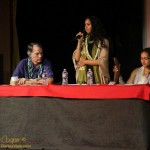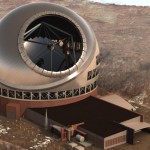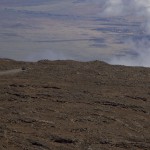A lot of emotion and bandwidth has been swirling around our mountain this past month. It has been unfortunate that two otherwise positive forces have collided atop one summit. Last night the local community had a chance to listen to various perspectives in a more personal and reasoned forum. The Honokaʻa Peoples Theater, located on the slopes of Mauna Kea is the perfect place for this to happen. An evening of face to face discussion.

The format was simple, a presentation by Hāwane Rios, explaining her perspective on growing up in the traditions of Mauna Kea. This was followed by a presentation by Doug Simons, executive director of the Canada-France-Hawaii Telescope. After a 15 minute intermission there was another hour of panel discussion with questions provided by the audience. What started at 6pm went on until well after nine, with personal conversations that kept the theater a buzz until well after 11pm.
Unfortunately one of the featured speakers Lanakila Mangauli was unable to attend, having flown to Oahu for a hasty meeting with OHA and state officials. He was not completely absent, a Skype connection projected on the theater screen allowed him to give a short presentation at the start. After having watched video of his tirade (Yes, I will call it that!) at the TMT groundbreaking ceremony, I had been given a somewhat less than flattering opinion of him. The person who addressed the audience this night was much more impressive, giving an intelligent and reasoned argument to his cause. I wish he had been able to address the audience in person.

Doug Simons also related his personal connection to the mountain, having spent the last 30 years working, hunting and raising his family here in Waimea and on Mauna Kea. Starting with the great discoveries that have been accomplished by the telescopes atop Mauna Kea, Doug did an admirable job of covering the importance of the research done at the telescopes and why these great instruments belong to all of mankind.

I spent the evening listening and operating a production video camera we had brought over from Keck. CFHT, Subaru and Keck staff operated a battery of audio/visual gear, live casting the event on YouTube, recording video for later editing and managing a Skype connection for Lanakila. I expect we should have good videos up shortly, they are definitely worth watching by anyone interested in the issues surrounding our mountain. The presentation by Hāwane should be worth watching just to hear her sing. I will put the links here as soon as they become available.
Update… Check out the video here.


